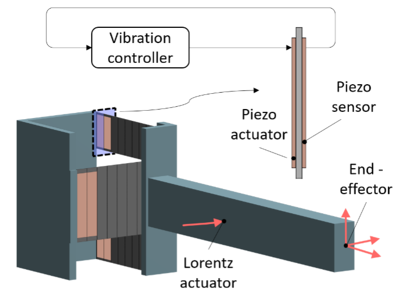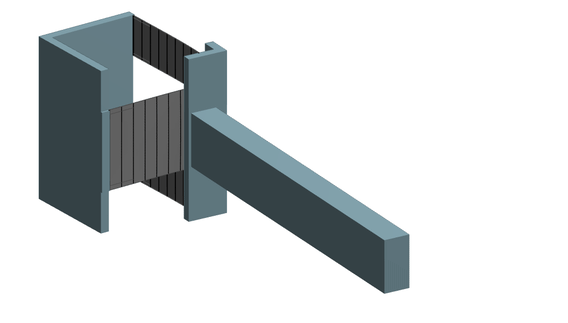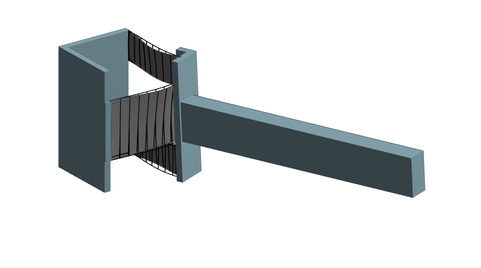The high-tech mechatronic industry in the Netherlands is highly competitive and requires machines to run with ever-increasing speed and precision. State of the art machines have practically reached the asymptote of high support stiffness with a low amount of mass. Higher precision and shorter cycles activate high frequency modes that need to be suppressed to obtain the desired performance and further increase the bandwidth. If significant damping is required, common passive dampers will unfortunately add significant mass, because the amount of damping is proportional to the added mass. Additionally, they also provide poor performance in the presence of multiple and/or varying modes. Active damping can be the solution when reduced mass is of main concern and multiple modes are present.
Current active dampers exhibit limited suppression when applied to systems with unwanted vibration modes that are dynamically varying and cover a wide range of frequencies (broadband). Additionally, active damping is limited by the actuator force. Therefore, there is a huge challenge in the design of an adaptive mechanism that is capable of suppressing varying broadband vibration modes.
|
|
Nominal motion | Parasitic vibration |
This project proposes to combine the two engineering disciplines of mechatronics and metamaterials to create a mechatronic metamaterial (MetaMech) structure for active vibration suppression. This MetaMech structure is characterised by integrating a high number of small smart actuators in a distributed manner into spatially architectured flexible structures (compliant mechanisms). The goal of MetaMech is to overcome (i) the mass limitation in passive damping and force limitation in active damping by an optimized distribution of active and passive material into a lattice metamaterial structure; and to overcome (ii) the fundamental limitations associated with known linear damping methods to enable broadband and/or varying mode suppression by developing adaptive nonlinear vibration suppression methods.

If successful, MetaMech will be an adaptive damping material that enables not only the utilisation of compliant mechanisms for highly dynamic motion systems with larger deflections, but also increases the precision and speed of current motion systems that are limited by broadband vibration modes.





